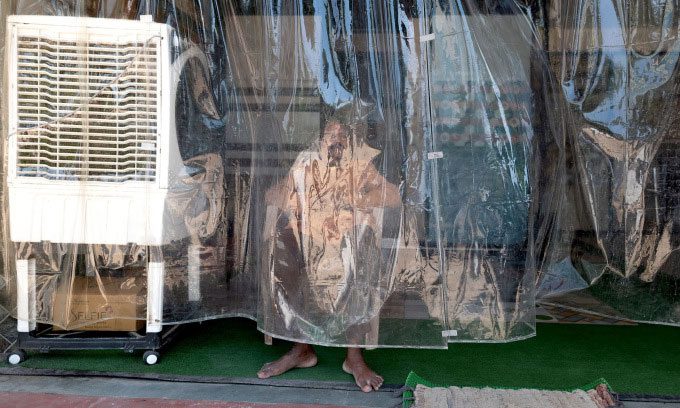Humans feel hotter when humidity is high, but current air conditioning systems are not optimized for dehumidifying the air; they focus solely on cooling.
“It’s not the temperature, but the humidity” is the challenge faced by people in hot and humid climates like Vietnam during the summer. Discomfort arises when humidity levels are too high, preventing sweat from evaporating, which clings to the skin and causes discomfort.
This situation affects not only daily life but also the operation of air conditioning units. These devices consume energy and account for 4% of global greenhouse gas emissions, twice as much as the entire aviation industry.
Experts warn that current generations of air conditioners will not meet the demands of increasingly hot and humid weather in the future. The machines have two functions: cooling the air and reducing humidity. However, most are designed for the former, and not every product is optimally designed to operate under high humidity conditions.

A resident sits next to an air cooler in Chhattisgarh, India, in May. (Photo: Washington Post).
When humidity is high, users often feel hotter even if the temperature doesn’t rise. They tend to lower the air conditioning temperature to combat the heat, leading to higher energy consumption.
Meanwhile, current air conditioners are not tested in suitable environments. They are tested at 35 degrees Celsius with a fixed compressor speed, which does not accurately reflect the hot and humid conditions in South and Southeast Asian countries. As a result, people in this region spend more on electricity when using these devices.
“Air conditioners need to overcool to reduce humidity, consuming more electricity than necessary,” commented Nihar Shah, Director of the Global Cooling Efficiency Program at the Lawrence Berkeley National Laboratory (LBNL) in the U.S.
Research conducted by the U.S. National Renewable Energy Laboratory shows that more than half of the emissions from air conditioning come from dehumidification activities. “Controlling humidity with air conditioning has a greater impact on the climate than adjusting the temperature,” researchers noted.
As global temperatures rise, residents in hot and humid areas will have to invest significantly in cooling equipment. According to the International Energy Agency, an average of about 10 air conditioners will be sold every second between 2023 and 2050. Among these, people in China and India may purchase billions of units over the coming decades as weather conditions become increasingly severe. This massive increase could produce an additional 100 billion tons of greenhouse gases by 2050, equivalent to global emissions over two years.
There are already many high-efficiency air conditioning systems that allow for indoor cooling with significantly lower electricity consumption and even improve moisture removal due to the use of desiccants. However, to make these products more common in the market, countries and international organizations must update equipment standards.
Many research groups, including LBNL, are calling for the development of new air conditioning testing methods that consider hot and humid regions of the world.
“Air conditioners need to be tested as they would operate in real conditions, using a wide range of temperatures and humidity levels, combined with varying compressor speeds, to help users make the best choices for themselves,” said Ankit Kalanki, a researcher at the Rocky Mountain Institute (RMI) in the U.S. “The demand for cooling will explode. If we continue using current technology, we will create a lot more emissions.”


















































